Commonly, the product name of FPV motors is formed by a group of two numbers. The first one refers to the dimensions of the motor and the second one to the speed of the motor. Brushless motors have two main parts: the rotor with permanent magnets and the stator with copper coils. After learning to decipher the numbers on FPV motors, we will analyze two motors from LN-motor in detail.
The first number has four digits (DDHH) and represents:
- “DD” is the stator’s diameter (or width) measured in millimeters.
- “HH” is the stator’s height in millimeters.
For example, the LN-motor FS2812 has a stator with 28mm diameter and a stator height of 12mm. Bigger motors have larger magnets that are capable of generating more thrust.
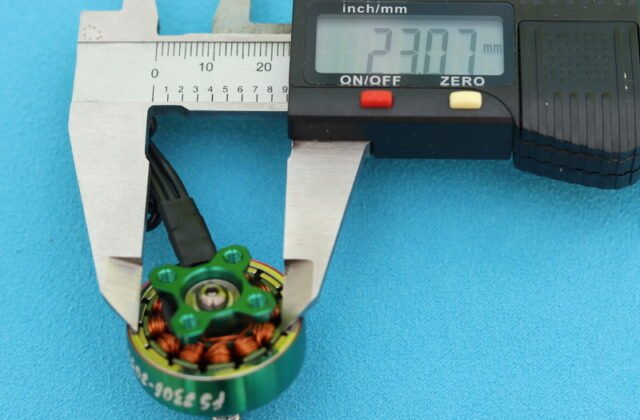
The second number is “KV” and represents the number of revolutions per minute (RPM) with no load when a one-volt is applied to the motor’s terminals. Therefore, theoretically, the FS2306 2050 KV motor will run 50% faster on a 6S battery than on a 4S one. Motors with higher KV tend to be more aggressive and power-hungry, while lower KV options are more efficient.
LN-motor FS2812 and FS2306 review
Disclosure: I received these FPV motors as part of a product review collaboration with LN-Motor. Although the motors were offered for free, all opinions in this article remain my own, and the sponsor did not influence me.
LN-MOTOR (Shenzhen Mingshi Innovation Technology) is an innovative technology enterprise focusing on producing brushless DC motors. “LN” comes from the Chinese names of the two founders, Lin and Na. The company has four UAV motor ranges:
| FPV | Multirotor | Fixed Wing | Educted fan |
| FS3115 900KV/1150KV | 4214 400KV | FA2826 740KV | 70mm 12-Blade 3060-2000KV |
| FS2806.5 1400KV/1750KV | 3115 1050KV | FA2820 870KV | |
| FS2306 2050KV | 2812 900KV/1150KV | FA2814 510KV | |
| FS2207 1800KV | FA2216 2400KV | ||
| 2806.5 1350KV | FA2216 2400KV | ||
| 2307 1950KV/2600KV | FA2208 1100KV | ||
| 2306.5 1800KV/1950KV | |||
| 2307.5 1950KV | |||
| 2207 1800KV/1950KV | |||
| 2004 1800KV/2800KV | |||
| 1406 4000KV | |||
| 1303 5500KV |
Last month, LN-Motor sent me their latest FPV motor catalog (available here) to choose the ones I need for review. I always wanted to build a 9-10″ long-range FPV drone, so I opted to test a set of FS2812 / 1150KV motors. As FS2306 motors are commonly used for racing drones, and I use many of them, I also opted to test a set of 2050 kV. Both motors are packed in the same type of plastic container with foam padding. In the center of the four motors is a bag that includes mounting screws and prop nuts. FS2812 is available in black, and FS2306 in green and navy blue.
While the smaller FS2306 adopts a unibell (one-piece rotor) design, the bigger FS2812’s rotor is made of two parts: a ring with the magnets and a cap with the shaft. Booth adopt 12N14P construction, where “N” represents the number of coils and “P” is the number of magnets.
LN-motor FS2812 1150KV
The LN-motor FS2812 1150KV is suitable for 8 and 9″ long-range FPV drones. Many experts say that 900KV would have been a more appropriate choice for a nine-inch. The motors weigh about 75 grams, including the 25cm 18 AWG leads.
The base has a 19x19mm mounting pattern with M3 screws. Looking down at the motor, you can see that the motor has a hollow shaft that saves some extra grams. It uses 5mm propeller nuts.
FS2812 1150KV Technical parameters
| KV | 1150 |
| N/P | 12N14P |
| Shaft diameter | 5mm |
| Stator diameter | 28mm |
| Stator height | 12mm |
| Mounting pattern | ⌀19 M3 |
| Weight | 75 grams |
| Wires | 3x250mm 18AWG |
| Resistance | 64.2Ω |
| Voltage | 3-6S |
| Max Power | 1595W |
| Max Current | 66A |
| Efficiency (g/W) | 1.93-3.87 |
| Max thrust | 3230grams |
I plan to use these motors on an iFlight Chimera9 ECO frame with MasterAirScrew 3MR 0945 glass fiber composite propellers. According to the manufacturer specs, using GF8045-3 propellers and 6S LIPO (24.1V) at full throttle, the thrust is around 3000g. For more test data, check here.
LN-motors FS2306 2050KV
I received green+red FS2006 motors, but navy blue+pink options are also available. These motors are suitable for 5 and 5.5″ propellers. Adopting a lightweight unibell design and a hollow shaft, they weigh just 36 grams, including the 15cm 20AWG wires. They have a 16x16mm M3 mounting pattern.
When selecting motor KV for 5″ racing drones, 1500-2000KV is designed for 6S, while 2300-2800KV is appropriate for 4S. The 2050KV is the middle way, suitable for 4S and 6S batteries.
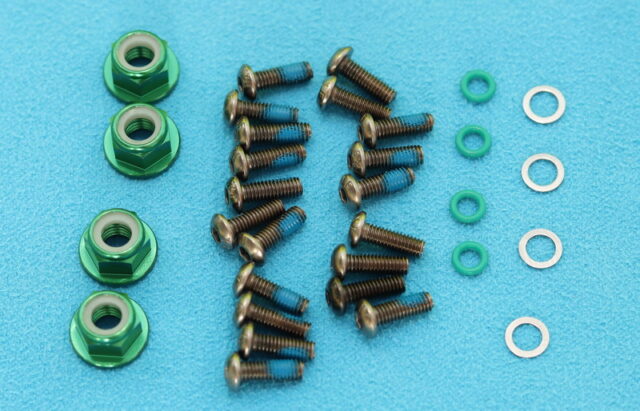
What’s weird is that only three from the four motors were printed with model number and KV value -one motor was unlabelled.
According to the manufacturer’s test results, using GF51466 propellers and 6S LIPO (22V) at full throttle, the thrust is around 1865g. For more test data, check here.
FS2306 2050KV Technical parameters
| KV | 2050 |
| N/P | 12N14P |
| Shaft diameter | 5mm |
| Stator diameter | 23mm |
| Stator height | 06mm |
| Mounting pattern | ⌀16 M3 |
| Weight | 36 grams |
| Wires | 3x150mm 20AWG |
| Resistance | 64Ω |
| Voltage | 3-6S |
| Max Power | 1030W |
| Max Current | 46.8A |
| Efficiency (g/W) | 1.81-3.18 |
| Max thrust | 1868grams |
How do you choose the right motor size for your frame?
Before choosing a motor, it’s important to have at least a rough idea of the size and requirements of the FPV drone you plan on building. Matching your frame wheelbase with the propeller size is mandatory. For example, you can’t physically install a 5″ prop on a 100mm size frame.
| Wheelbase | Propeller size | Motor | KV |
| 65-150mm | 3″ and smaller | 1003 – 1306 | 3000-10000KV |
| 150-180mm | 4″ | 1806, 2204 | 2600KV – 3000KV |
| 180-220mm | 5″ | 2205-2208 2305-2306 | 2300KV-2600KV |
| 220-250mm | 6″ | 2206-2208, 2306 | 2000KV-2300KV |
| 250-280mm | 7″ | 2506-2508 | 1200KV-1600KV |
| 280-420mm | 8 and 9″ | 26XX 28XX | 1200KV and lower |
| 420mm+ | 10″ and larger | 32xx and bigger | 1200KV and lower |
You’ll need the estimated total take-off weight (including battery and camera) to calculate the minimum thrust required for your motors. Normally, a 2:1 thrust-to-weight ratio would be enough, but for racing and freestyling FPV drones, you will need at least a 10:1 ratio.
For example, if you have a 500g racing quad, the total thrust generated by all motors should be at least 5kg. That’s more than 1 kg thrust produced by each motor.
To drive a brushless motor, you’ll need an ESC (electronic speed controller). Commonly used ESCs on FPV drones have ratings from 10 to 100A, and you need to match them with the motor’s power needs. If you drive FS2812 motors with 214-1300W power with 20A amper ESC, this will last only a second -when you push the throttle higher, it will smoke and burn out.

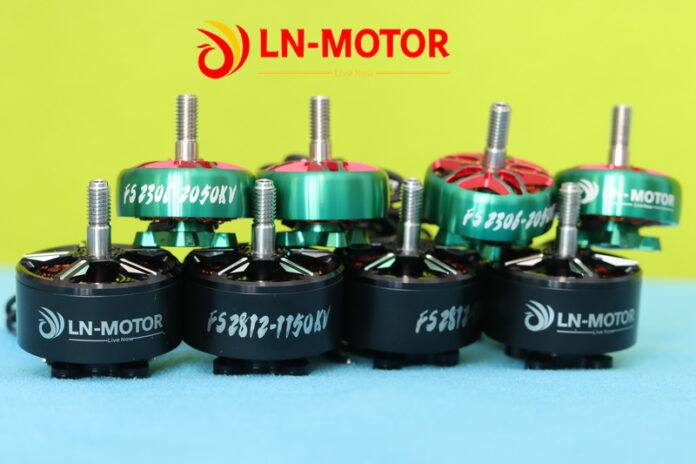
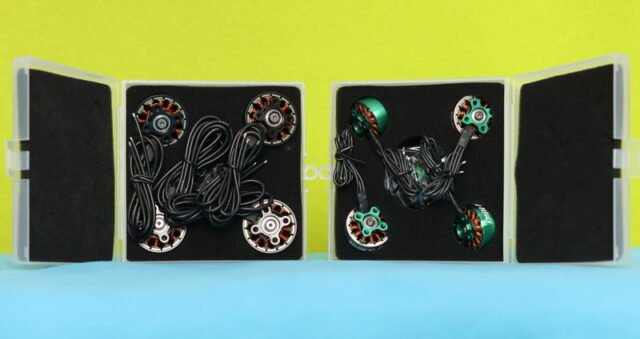
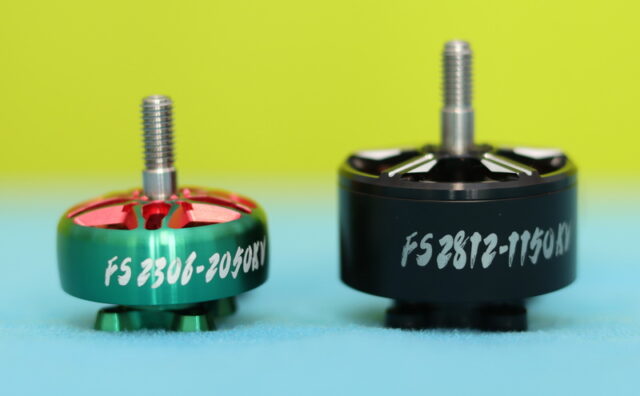
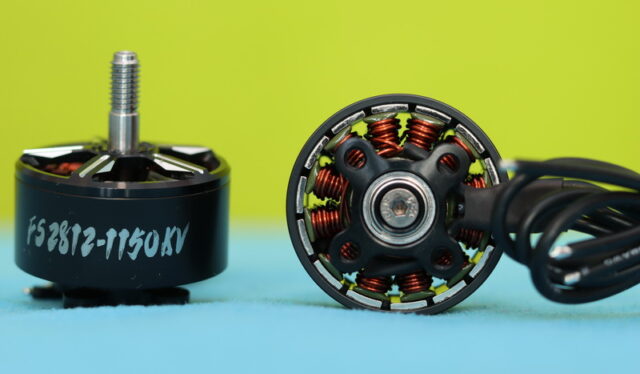
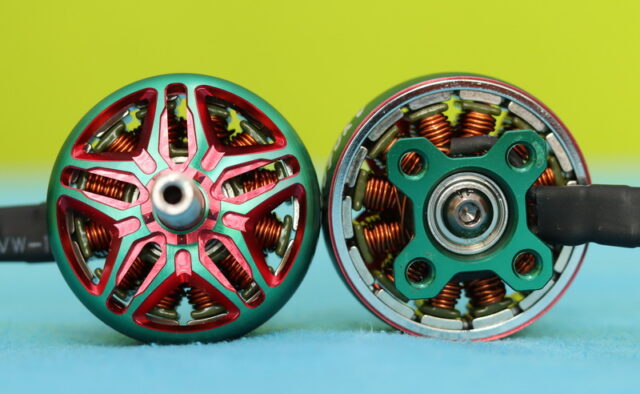
When will these motors be available in the UK
These look similar to the Lumenier Zip V2 2812 Cinematic Motors, how they perform in the air?
Never heard about “LN-motor”. Let me know how their motors work on your 9″!